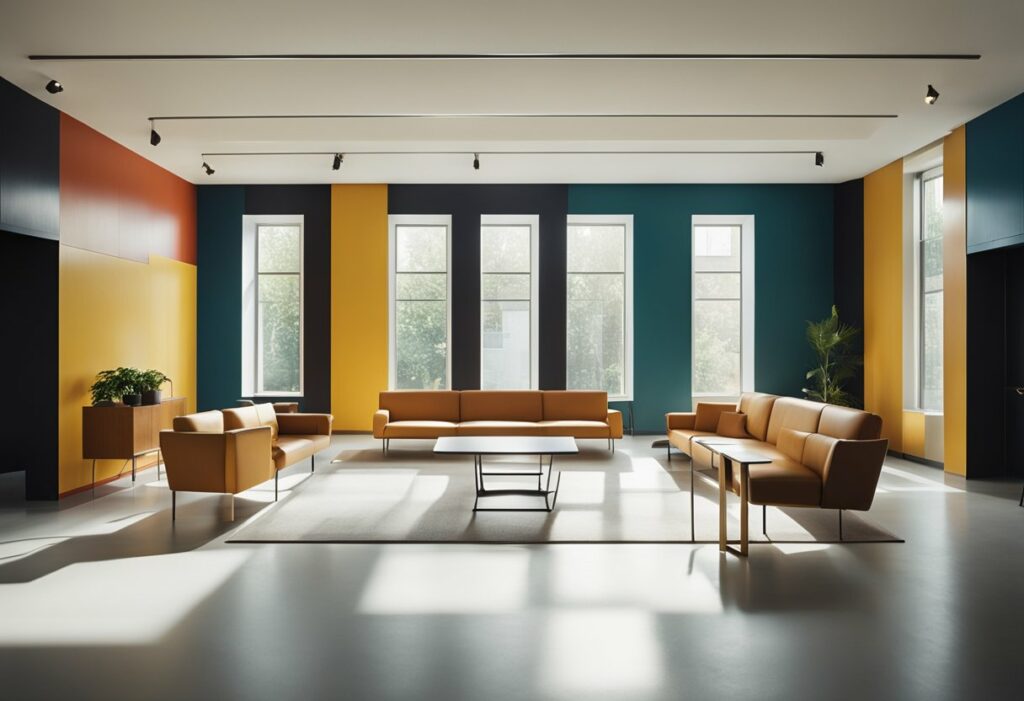Bauhaus Interior Design: The Art of Simplicity
Bauhaus interior design is a style that originated in Germany in the early 20th century. It is known for its minimalist aesthetic, geometric shapes, and functionality. The Bauhaus movement was founded by Walter Gropius, who aimed to create a new type of design that would combine art and technology.
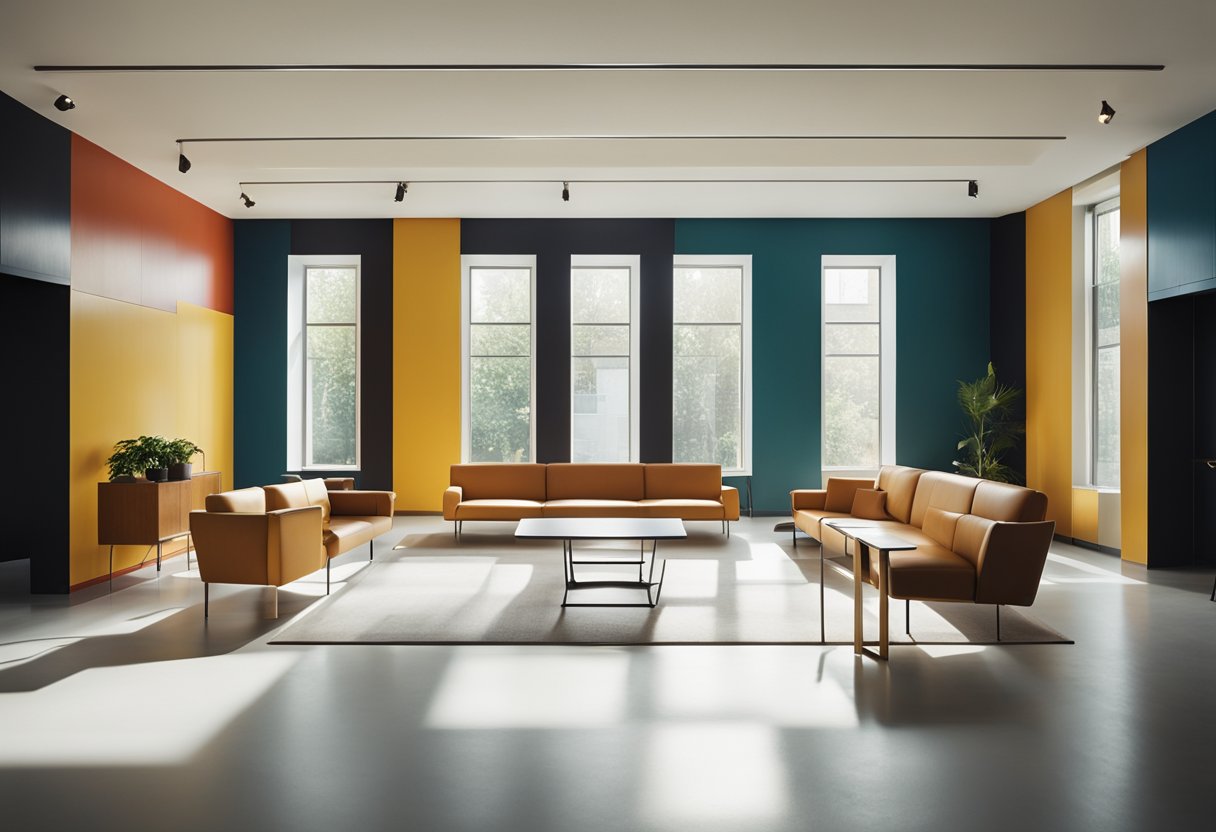
The foundations of Bauhaus interior design lie in the belief that form follows function. This means that every object should be designed with its intended purpose in mind. The movement also sought to create designs that were accessible to everyone, not just the wealthy. Bauhaus designers believed that good design should be simple, functional, and beautiful.
Key Takeaways
- Bauhaus interior design is a minimalist style that emphasizes functionality and geometric shapes.
- The movement was founded by Walter Gropius and aimed to create designs that were accessible to everyone.
- The key principles of Bauhaus interior design include form follows function and the use of simple, beautiful designs.
Foundations of Bauhaus Interior Design
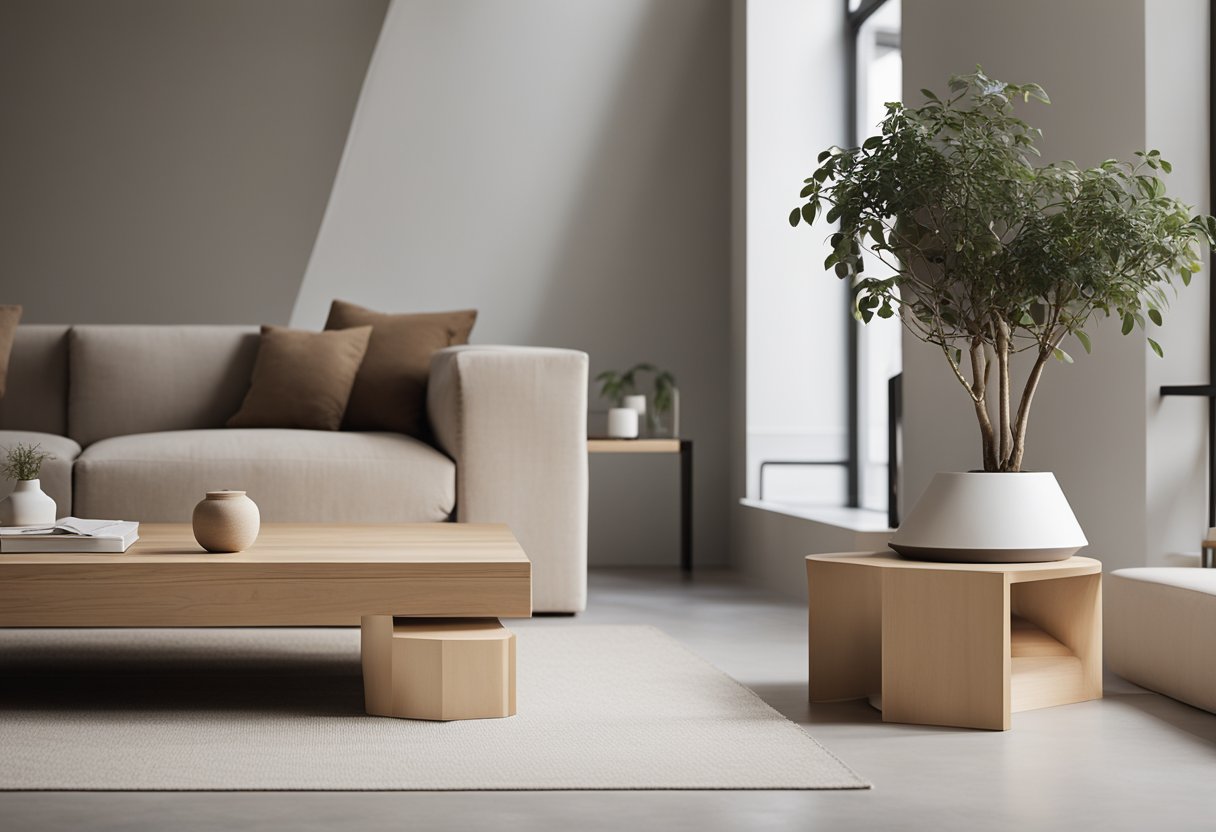
If you’re interested in interior design, you’ve probably heard of the Bauhaus movement. This influential design movement originated in Germany in the early 20th century, and its influence can still be seen in modern design today. In this section, we’ll explore the historical context and origins of Bauhaus interior design, as well as its key figures, philosophy, and principles.
The Historical Context and Origins
Bauhaus interior design emerged in the aftermath of World War I, during a time of political and social upheaval in Germany. In 1919, architect Walter Gropius founded the Bauhaus school in Weimar, with the goal of creating a new type of art and design education that would integrate fine art and craftsmanship with modern technology. The school moved to Dessau in 1925 and was shut down by the Nazis in 1933.
Key Figures in Bauhaus
Several key figures played a role in the development of Bauhaus interior design. Walter Gropius was the founder of the Bauhaus school and one of its most influential proponents. Marcel Breuer was a furniture designer and architect who created iconic pieces such as the Wassily chair. Mies van der Rohe, also known as Ludwig Mies van der Rohe, was an architect who served as the director of the Bauhaus school from 1930 to 1933.
Philosophy and Principles
Bauhaus interior design is characterized by its simplicity, functionality, and emphasis on form following function. The movement rejected ornate decoration and instead focused on clean lines, geometric shapes, and industrial materials. Bauhaus designers believed that good design should be accessible to everyone, and they sought to create objects that were both aesthetically pleasing and practical.
One of the key principles of Bauhaus interior design is the idea that form should follow function. This means that the design of an object should be determined by its intended use, rather than by ornamental considerations. Bauhaus designers also believed in the importance of craftsmanship and the use of high-quality materials.
In conclusion, Bauhaus interior design is an important movement that has had a lasting impact on the world of design. Its emphasis on simplicity, functionality, and form following function has influenced numerous designers and continues to be relevant today.
Characteristics and Elements of Bauhaus Design
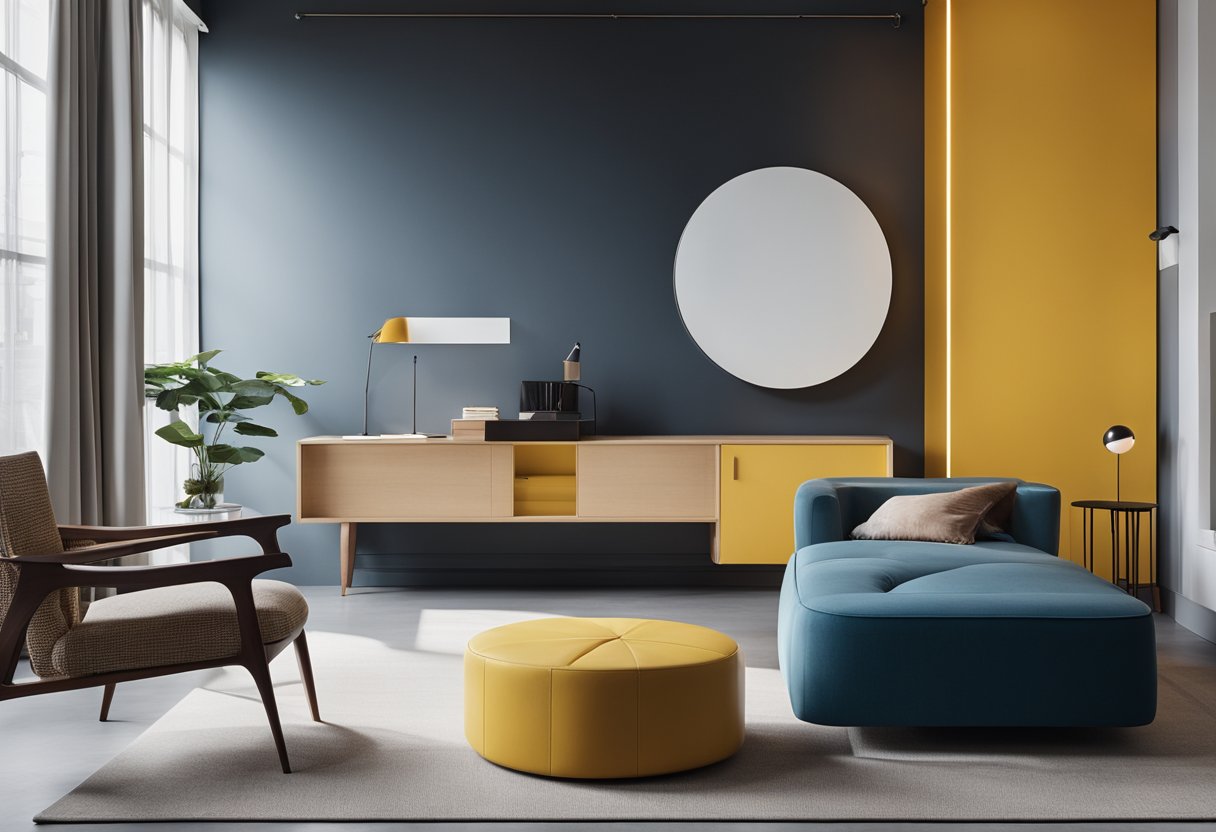
Bauhaus interior design is known for its functional, minimalist, and streamlined aesthetic. The style emerged in Germany in the early 20th century, and its influence can still be seen in modern interior design. In this section, we’ll explore the key characteristics and elements of Bauhaus design.
Architectural Features
Bauhaus architecture is characterized by clean lines, geometric forms, and the use of industrial materials such as concrete, glass, and steel. The style emphasizes function over form, and the buildings are designed to be efficient and practical. The Bauhaus movement also popularized the use of tubular steel, which was used to create furniture and other objects.
Iconic Furniture and Object Design
Bauhaus design is perhaps best known for its iconic furniture and object designs. The Wassily Chair and the Barcelona Chair are two of the most famous examples of Bauhaus furniture. These pieces are characterized by their clean lines, simple forms, and use of primary colors. They are also designed to be functional and comfortable, as well as beautiful.
Influence on Modern Interior Aesthetics
The influence of Bauhaus design can be seen in modern interior aesthetics, particularly in minimalist interiors. Bauhaus designers believed in reducing clutter and creating order, and this philosophy is still popular today. The use of geometric forms, primary colors, and industrial materials is also common in modern design.
Bauhaus design has had a profound impact on modernism, and its influence can be seen in a wide range of fields, from architecture to textiles. The style is characterized by its focus on function, its use of industrial materials, and its minimalist aesthetic. If you’re looking to create a beautiful, streamlined interior, then Bauhaus design is definitely worth considering.
Frequently Asked Questions
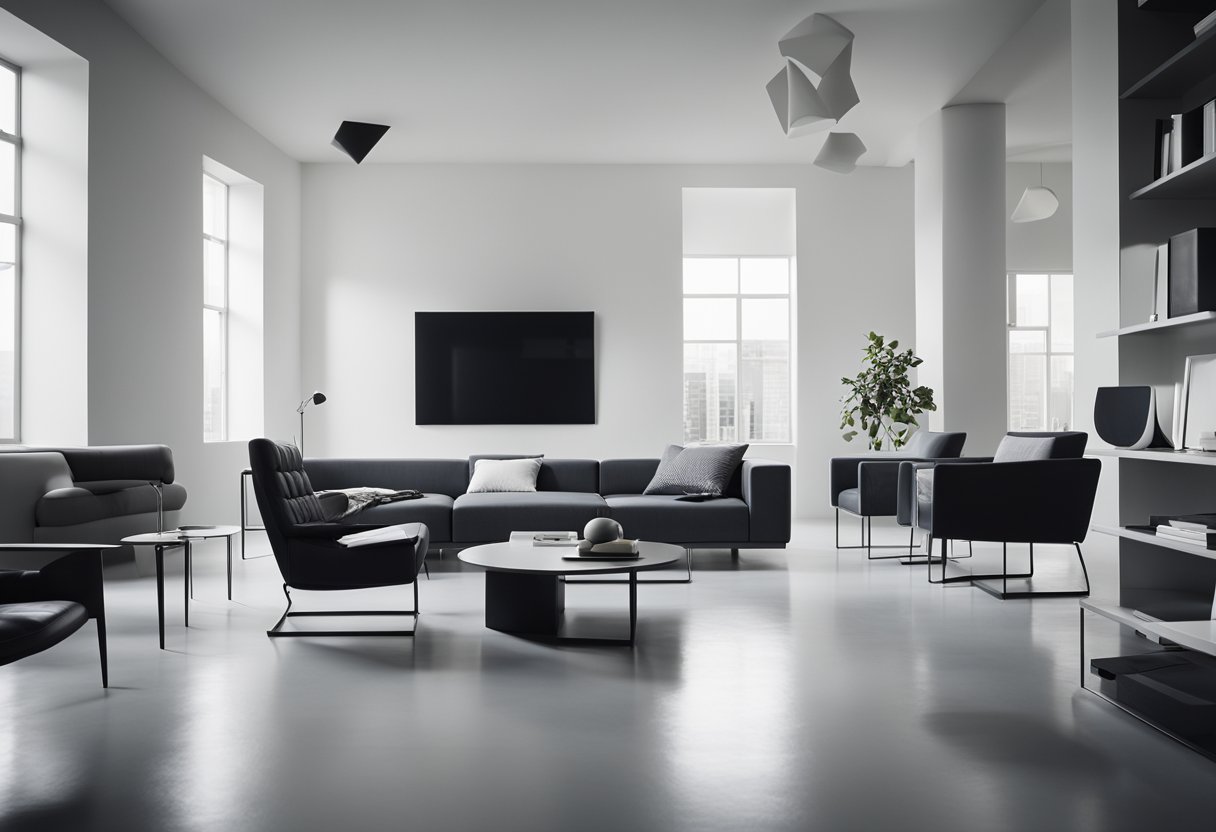
What are the defining features of a Bauhaus-inspired living space?
A Bauhaus-inspired living space is characterised by its minimalism, functionality, and geometric shapes. The furniture is typically simple and sleek, with clean lines and a focus on form following function. Neutral colours such as white, black, and grey are often used as the primary colour palette, with occasional pops of bold colours to add interest.
How can one incorporate the Bauhaus style into a modern home interior?
One way to incorporate the Bauhaus style into a modern home interior is by using furniture with clean lines and geometric shapes. You can also use neutral colours as the primary colour palette, with pops of bold colours to add interest. Another way to incorporate the Bauhaus style is by using materials such as chrome, glass, and steel to create a sleek and modern look.
What historical influences shaped the Bauhaus movement in interior design?
The Bauhaus movement in interior design was influenced by many historical factors, including the Arts and Crafts movement, Art Nouveau, and the Deutscher Werkbund. These movements emphasised the importance of craftsmanship, simplicity, and functionality in design.
Could you suggest ways to infuse Bauhaus principles into a minimalist decor?
To infuse Bauhaus principles into a minimalist decor, you can use furniture with clean lines and geometric shapes. You can also use neutral colours as the primary colour palette, with pops of bold colours to add interest. Another way to incorporate Bauhaus principles is by using materials such as chrome, glass, and steel to create a sleek and modern look.
What colour palette is typically associated with Bauhaus interiors?
The colour palette typically associated with Bauhaus interiors is neutral colours such as white, black, and grey, with occasional pops of bold colours to add interest. The focus is on simplicity and minimalism, with colour used sparingly.
How does the functionality aspect play a role in Bauhaus interior aesthetics?
Functionality is a key aspect of Bauhaus interior aesthetics. The furniture is designed to be simple and functional, with form following function. The focus is on creating a space that is efficient and practical, while still being aesthetically pleasing.

